In this NewsFlash we hear about a breakthrough in cancer genetics, how Jason the submersible caught a deep sea volcano exploding and the discovery of a very watery super-earth. Plus, the evolution of the Koala, what our memory for dance moves tells us about human cognition, and the important differences between leg bones and skull bones!
In this episode
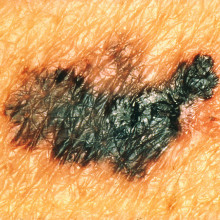
Tracking genetic changes in cancer
The first comprehensive analyses of cancer genomes have been published in the journal Nature this week.
The research, led by teams at the Wellcome Trust Sanger Institute, has been called "truly groundbreaking" by Cancer Research UK. What's so exciting about this work is not just that they catalogue the mutations in each tumour, but that their technique enables them to work out the causes and history of the mutations.Looking at two patients, one with lung cancer and the other with melanoma, Mike Stratton and colleagues sequenced both tumour cells and healthy cells. They could then compare like with like to identify which parts of the DNA differed in the cancerous cells. By doing this, they discovered over 23,000 mutations in lung cancer, and in excess of 33,000 for the melanoma.
We've known for a while that these two cancers have very strong associations - with tobacco smoke for lung cancer, and with exposure to ultra-violet radiation in melanoma. 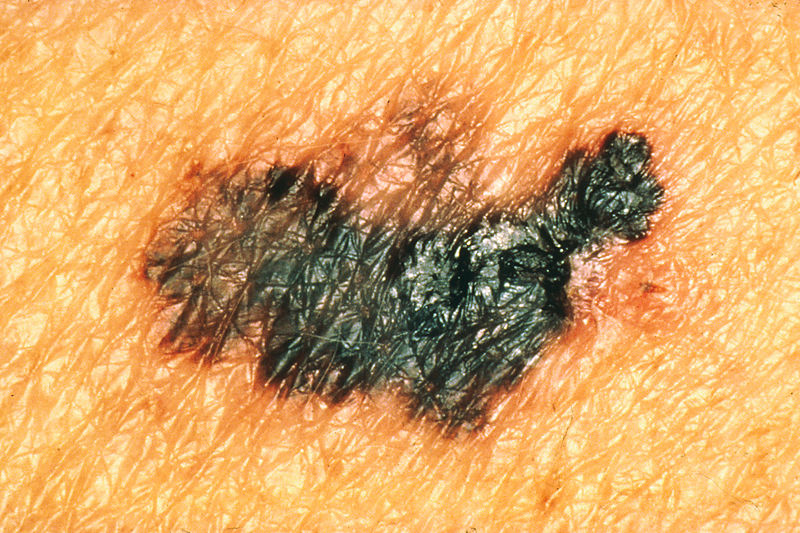 By looking at these mutations, and the genes around them, the researchers were able to identify a mutation signature for each risk factor.
By looking at these mutations, and the genes around them, the researchers were able to identify a mutation signature for each risk factor.
For example, many of the mutations relate to chemicals in tobacco smoke that bind to and interact with DNA. With melanoma, Wellcome Trust Sanger Institute researcher Dr Andy Futreal said "we can see Sunlight's signature writ large in the genome". They also found tell tale signs of attempted, but failed, DNA repair - suggesting that our bodies try, and often fail, to repair damage done.
This work further shows that there isn't a single triggering factor for cancer - the mutations build up over time and exposure, spanning years before the cancer itself becomes apparent. Which of these mutations are responsible for making a cell cancerous is now a major challenge for the next few years.
Other cancers have less obvious risk factors, and sequencing genomes is neither quick nor cheap, so there is still a lot of work to be done. But research like this, combined with the fact that sequencing is becoming ever cheaper, will help to change the landscape of cancer research, prevention and treatment.
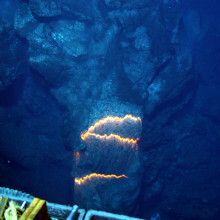
04:00 - Submarine Volcano: first eruption footage
Submarine Volcano: first eruption footage
For the first time, scientists have caught on camera an erupting underwater volcano...
The spectacular footage shows enormous glowing bubbles of lava, 1m across, bursting into the Pacific Ocean and lava flowing across the sea floor over 1km below the surface. It's a type of volcanic eruption - called a boninite eruption - only seen before in extinct, million year old volcanoes.
The West Mata Volcano was visited by the unmanned submersible vessel, Jason, as part of a major research project involving a huge group of collaborating scientists from across the US. Volcanic explosions are suppressed by the enormous pressure so deep down underwater allowing the vessel to get extremely close to the erupting volcano - up to a few feet away - much closer than is possible on land or in shallow water. There is a lot we can learn from this underwater volcano.
The detailed footage and samples collected will reveal many of the secrets of how ocean islands and underwater volcanoes are born, what goes on as one tectonic plate is subducted under another, and how heat, carbon dioxide and sulphur are cycled between the deep interior of the earth and the surface.
This is very important because it is thought that 80% of all the eruptive activity on earth takes place in the oceans and most, like this one, are in the deep sea and we know very little about.Surrounding this volcano are some of the harshest conditions on earth, and yet life has found a way.
Researchers found a diverse community of microbes living around the volcano despite the immense pressure and acidic waters: directly above the volcano the water was as acidic as battery acid or stomach acid. They also found shrimp thriving around the volcanic vent and have taken DNA samples to how closely related they are to shrimp species living on other submarine volcanoes thousands of miles away.
It all goes to show that there is still so much we don't know about the earth and how it works, and reminds us of what extraordinary things there are still waiting to be discovered.
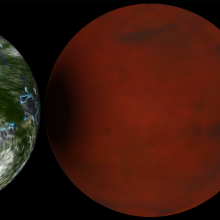
Wet World - Planet made of Water
Over the last few years astronomers have discovered over 400 planets outside our solar system. Most of these are large gas giant planets similar to Jupiter or Uranus and most of them orbit close to their parent stars. This probably reflects the fact that planets of this type are much easier to detect than their smaller, more distantly-orbiting counterparts; but now instruments are becoming sufficiently powerful to enable astronomers to spot smaller planets, known as "superearths".
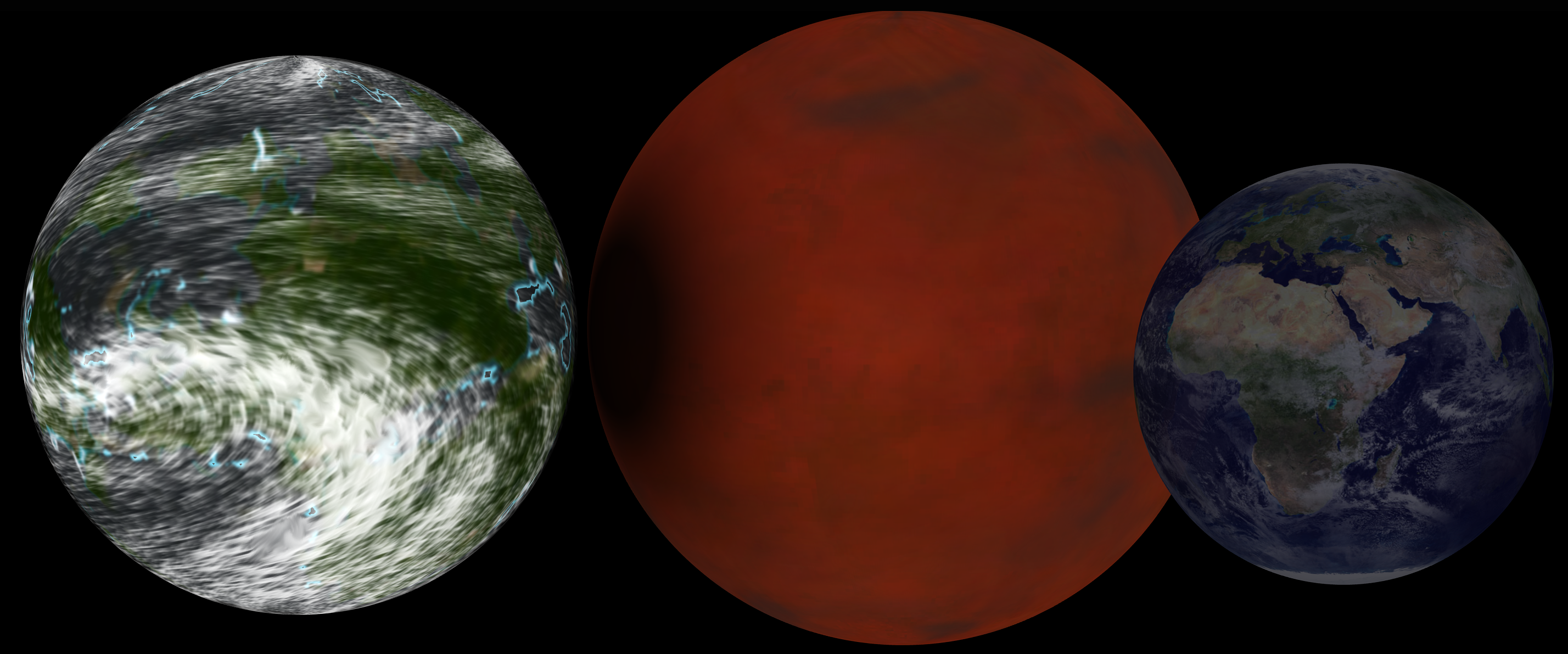 There are two main ways of finding distant planets, either by looking at how their gravity moves their star around, or by looking for the dip in brightness as the planet moves in front of its parent star. The first method can tell you the mass of a planet and the second how large it is: bigger planets block more light.
There are two main ways of finding distant planets, either by looking at how their gravity moves their star around, or by looking for the dip in brightness as the planet moves in front of its parent star. The first method can tell you the mass of a planet and the second how large it is: bigger planets block more light.
Now, using both of these methods, a team led by David Charbonneau from Harvard University has discovered a planet called GJ1214b orbitting a red dwarf star. The measurements reveal that the planet has a mass about 6.6 times that of Earth, but its volume is over 19 times larger; together these results show that the density of the planet is only about 1.9 times greater than water.
The only way to explain these findings would be if the planet contained a small core with an enormous atmosphere, but this is thought to be very unlikely. Instead the team think that it may be small rocky planet surrounded by a massive ocean, thousands of kilometres deep.
Attractive as this sounds, hospitable it probably isn't. The team predict that the water temperature would be about 190°C, so possibly not the next beach-holiday destination!

Cultural difference between left and right
The way we remember dance moves reveals the incredible flexibility of the human brain, according to research published in Current Biology this week.
Daniel Haun of the Max Planck Research Group for Comparative Cognitive Anthropology studied the way that different cultures remember dance moves, inspired by previous research that shows how different cultures use different strategies for describing the world - for example - I might think that the microphone is in front of me, whereas a nomadic hunter-gatherer from Namibia would think of the microphone as being to the West.
 These two ways of encoding the spacial relationships of objects are called egocentric (based around you) and allocentric (based around everything else), and our brains use these two interchangeably. However, the way the brain encodes the positions of our hands and feet, what's called proprioceptive space, is strongly egocentric.
These two ways of encoding the spacial relationships of objects are called egocentric (based around you) and allocentric (based around everything else), and our brains use these two interchangeably. However, the way the brain encodes the positions of our hands and feet, what's called proprioceptive space, is strongly egocentric.
Because of this, you might assume that the way we move our bodies would also be egocentric. - We would always base these movements around ourselves. However, it seems that's not always the case. The team asked two groups of children to learn a simple dance - one group from Germany, and another from a group of San or bushmen, called Haikom. The dance instructor stood next to the children and showed them a simple dance sequence that involved shaking clasped hands from side to side, starting with the right, then left, then right.
Once the children had learned the dance, they were asked to turn around, so they were facing the opposite direction, and do the dance again.
The German schoolchildren almost always moved their hands to the right first, regardless of what direction they were facing. The Haikom children, however, would switch the movements depending on which way they were facing - so if they started on the right when facing north, they would start on the left when facing south.This shows that the way we code our body movements is not strictly egocentric, but in part defined by our culture - or as they put it "cultural diversity goes hand in hand with cognitive diversity".
This may sound like a fun experiment but it has a serious message about the way we study the brain - when we seek to understand cognitive function, it's vitally important to include a cross-cultural perspective - the brain does not exist in isolation.
Haun said "It's becoming more and more clear that we cannot simply extrapolate from investigations within our own population to others. To understand the human mind, we need to widen our perspective and assume diversity rather than universality of cognition until proven otherwise."
Why koalas took to eucalyptus
Koalas, those dozy, lovable emblems of Australia, look like teddy bears but being marsupials are only very distantly related to real bears. A new study sheds light on the little-known evolution of koalas, revealing that the their ancestors didn't have the specialised teeth and jaws that would have allowed them to eat tough and somewhat toxic eucalyptus leaves.
It turns out that koalas only more recently  adapted to cope with this unique diet. Publishing in the Journal of Vertebrate Palaeontology, researchers from the University of New South Wales and the CSIRO in Australia investigated the fossilised skulls of two koala species that lived in the Australia in the Miocene, around 24 - 5 million years ago.
adapted to cope with this unique diet. Publishing in the Journal of Vertebrate Palaeontology, researchers from the University of New South Wales and the CSIRO in Australia investigated the fossilised skulls of two koala species that lived in the Australia in the Miocene, around 24 - 5 million years ago.
The team also found some striking similarities in the prehistoric and modern koalas. Both have a round hollow bony structure in the ear, which is a key to their ability to create loud and complex vocalizations. Koalas may be lazy but they can be extremely noisy, bellowing at each other across the treetops, something it turns out they have been doing for a long time and long before developing their eucalyptus leaf habit. Eucalypts only became abundant as Australia drifted away from the tropics, becoming drier with less rainforests.
Sadly, this week also saw news that koalas are among the group of species that are likely to be hit hardest by climate change. Scientists from the International Union for the Conservation of Nature (IUCN) highlighted the plight of a long list of species that will not fair well in the coming years, including clown fish, beluga whales and emperor penguins. Koalas may face starvation as the nutritional quality of eucalyptus leaves are predicted to decline as levels of carbon dioxide increase.
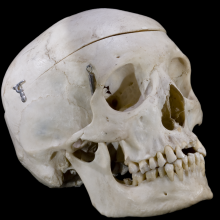
15:28 - Why Skull Bone is Special Bone
Why Skull Bone is Special Bone
Dr Ian McKay, Queen Mary University of London
Ben - Also on the news this week, scientists 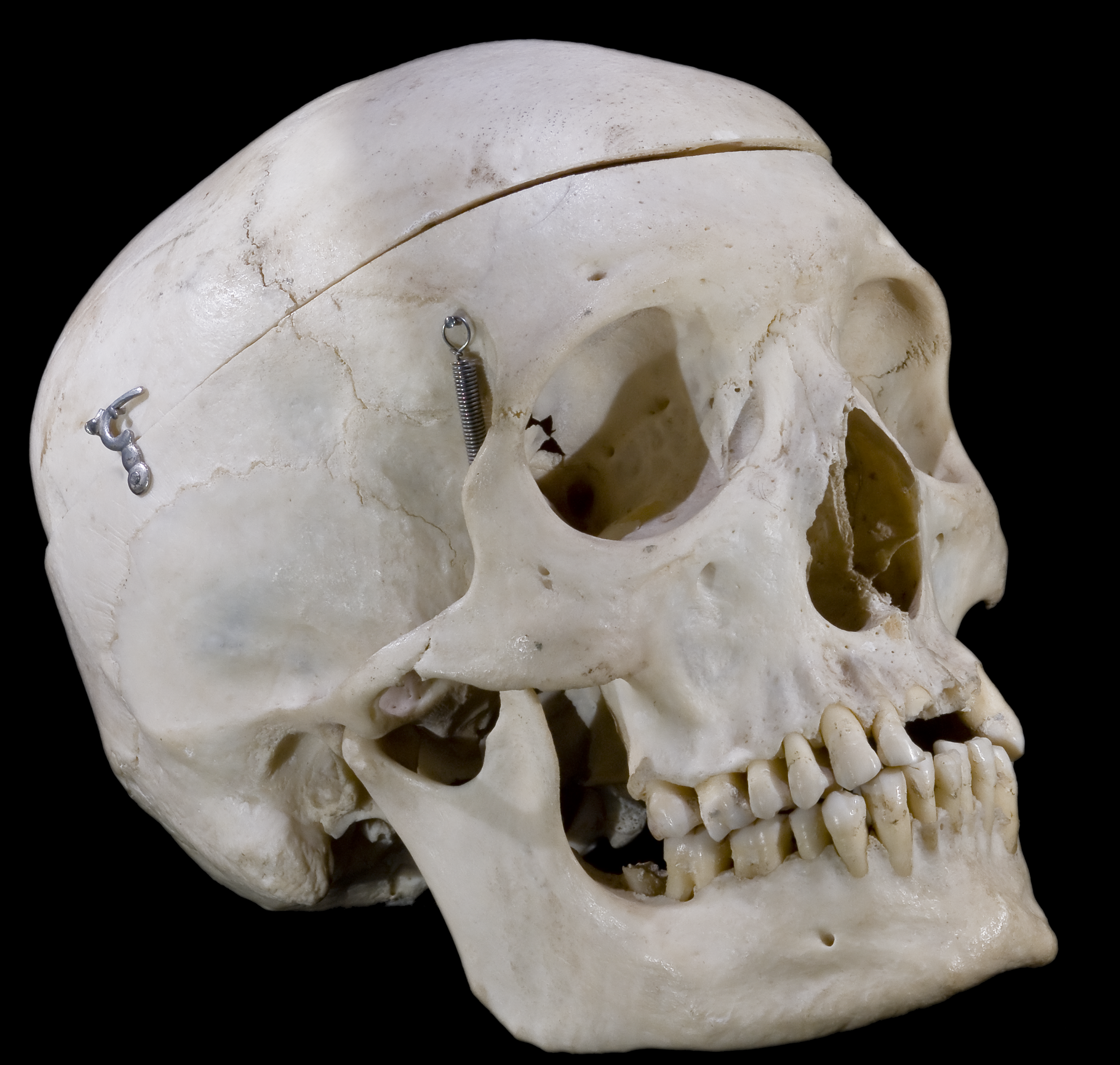 at Queen Mary University of London helped discover someof the fundamental differences between the bone in our skulls and the bones in our limbs. And this could hold the key to tackling bone weakness and fractures in osteoporosis. They have published their work in the journal PLoS ONE. And we're joined by Dr. Ian McKay to explain a bit more. Hi, Ian. Thanks for joining us.
at Queen Mary University of London helped discover someof the fundamental differences between the bone in our skulls and the bones in our limbs. And this could hold the key to tackling bone weakness and fractures in osteoporosis. They have published their work in the journal PLoS ONE. And we're joined by Dr. Ian McKay to explain a bit more. Hi, Ian. Thanks for joining us.
Ian - Hello.
Ben - So what does happen to bones over time?
Ian - Well, there's a gradual and progressive loss of most bone structure and strength. And that's what will ultimately lead to osteoporosis.
Ben - And by osteoporosis of course it comes from from bone and pores or holes so essentially we think you have holes in the bone.
Ian - That's right. And it's so common, about 50% of all women over 50 are going to suffer from this condition in some form.
Ben - So what is it that you've been looking at?
Ian - Well, in one sense , it sounds like the science of the plainly obvious because we'll be comparing the bones from the skull to the arm. But when you consider osteoporosis, what's interesting is that the skull really doesn't show the same vulnerability to osteoporosis as the rest of the skeleton. What's more curious, you know, on that basis is that we know that you need mechanical forces to maintain most of your skeleton. If you don't walk about, your bones will actually will dissolve and be less strong. But the same is not the case for the skull which doesn't actually experience the same mechanical forces as your arms and legs. Probably, the forces on your arms and legs are maybe 20 to 30 times higher. So it's rather interesting why the skull should be protected in this way.
Ben - So is it not just the case that bones become weaker, such as the limb bones, because of the different mechanical stresses?
Ian - Well, it is to a certain extent. And you can maintain that by exercises as you get older. But the skull really seems to be completely insensitive to that. What we've been doing is looking at the genetic differences between the cells that make the bone in your skull and in your arm. And we find that they are indeed quite different.
Ben - So these are factors that occur in the womb, I assume? So the genes, different genes are switched on. Some say, "I'm going to make skull bone that will never end up with osteoporosis." And others say, "I'm going to make arm bone. It'll be under lots of tension. And eventually, it may become weak."
Ian - Well, yes. I mean, I think this just emphasises the complex nature, people will look at a tissue like bone and they see its uniform over the whole body but in fact if you think about it, your arms and your legs actually are able to experience different forces and designed to respond to those forces differently. And what we're looking at with the skull is a very dramatic difference between being very hard and protected in the absence of these normal mechanical stimuli.
Ben - And as these are genetic factors, do they only really kick in the womb? What happens when we damage our bones, and we have to grow back new bone to knit old broken ones together?
Ian - Well, there's two aspects to that. The first is that you obviously do,when regenerate bone, you regenerate bone in their appropriate character for the damaged tissue. But another thing is that this mechanical responsiveness, that most of the skeleton seems to show, is something which seems to be acquired during development, before birth in the maternal environment. And there's increasing evidence that actually what happens before birth will determine your final mineral mass, your final bone density and strength when you're an adult. And obviously the more bone you have, the less likely you are to be affected by osteoporosis later in life.
Ben - And obviously this is something quite important for this time of year. It's very icy out there, certainly in Cambridge at the moment. And people will fall. And when you're bones are weak, certainly in the elderly, you can do a lot of damage to yourself. Are we learning anything from your work that can help to prevent this or help to protect people from damaging their bones?
Ian - Well, clearly if there was a way of tricking or making most the skeleton, feel that they are a bit more like the skull. Then we'll be able to improve and maintain mineral density. But really we're at the very early stage. I think it's quite as surprise to some people to show that these bone cells really are that different. I think a lot consider that they are fundamentally the same.
Ben - Well, it's fascinating. So where should we go next? Where's the next step for you?
Ian - Well, I think the next important step is to find out when during development the mechanical responsiveness is being established. I mean, there's quite good evidence that you can direct or correlate changes in the maternal blood chemistry where the bone density of children who are eight or nine years old. But what we don't know is when during pregnancy that very important set point is being established.
And I think that's the key element if we wanted to intervene and maybe manipulate bone density and this kind of the gene what we've done will identify some of the markers which I think will be important in that.
Related Content
- Previous Why can't dogs eat chocolate?
- Next Dissecting Christmas Dinner









Comments
Add a comment